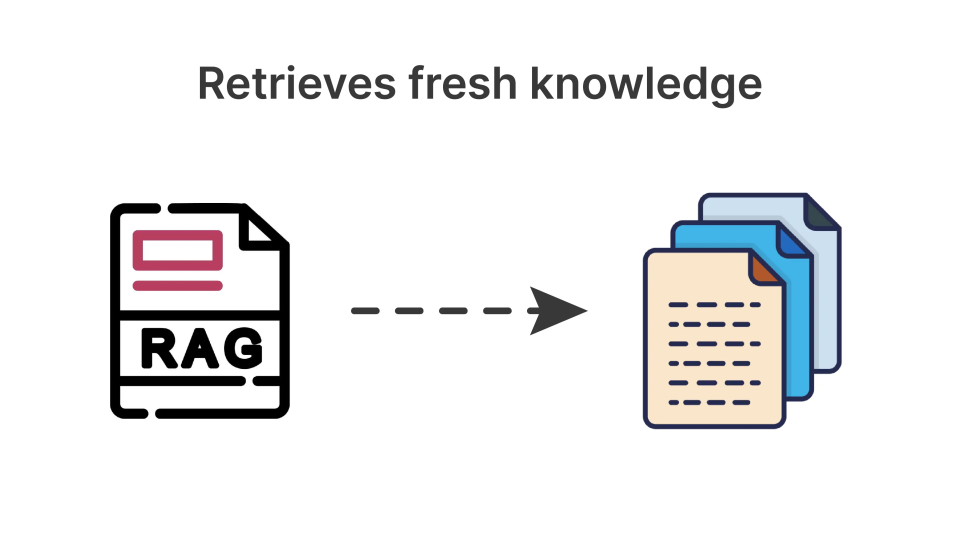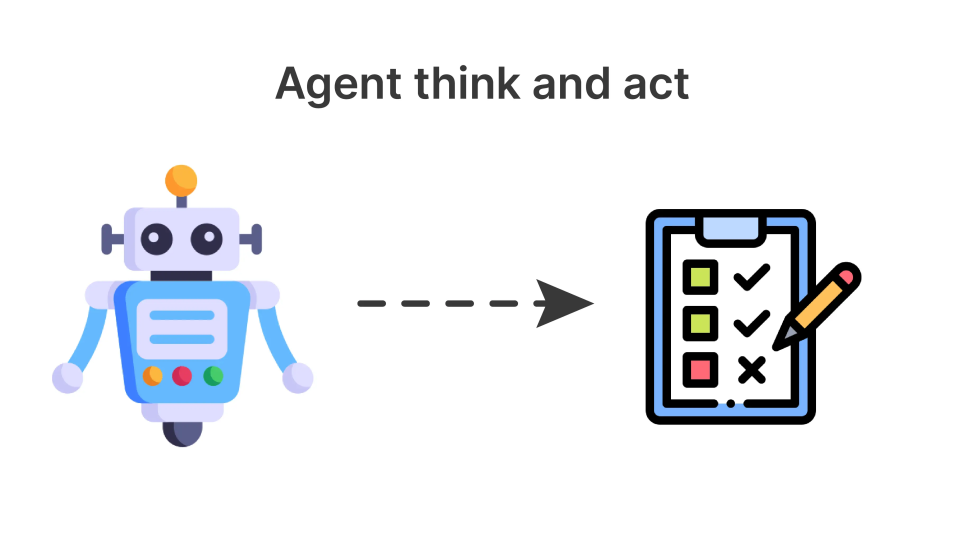Artificial intelligence has advanced quickly, and the world of AI has transformed from chatbots that can write text to systems that can reason, retrieve knowledge and take action. There are three principal constructs of intelligence behind this progression: Large Language Models (LLMs), Retrieval-Augmented Generation (RAG), and AI Agents. Understanding LLMs vs RAG vs AI Agents comparison is essential to see how today’s AI systems think, learn, and act.
People often reference them together as technology themes, but each represents a different layer of intelligence: the LLM serves as the reasoning engine, RAG connects it to real-time knowledge, and the Agent turns that reasoning into real-world action. To anyone architecting or using AI-based systems today, it is imperative to under…
Artificial intelligence has advanced quickly, and the world of AI has transformed from chatbots that can write text to systems that can reason, retrieve knowledge and take action. There are three principal constructs of intelligence behind this progression: Large Language Models (LLMs), Retrieval-Augmented Generation (RAG), and AI Agents. Understanding LLMs vs RAG vs AI Agents comparison is essential to see how today’s AI systems think, learn, and act.
People often reference them together as technology themes, but each represents a different layer of intelligence: the LLM serves as the reasoning engine, RAG connects it to real-time knowledge, and the Agent turns that reasoning into real-world action. To anyone architecting or using AI-based systems today, it is imperative to understand how they both differ and how they work together.
Table of contents
- The Simple Analogy: Brain, Knowledge, and Decision
- Large Language Models: The Thinking Core
- Retrieval-Augmented Generation: Giving AI Fresh Knowledge
- AI Agents: From Knowing to Doing
- How the Three Work Together
- Challenges and Considerations
- Conclusion
- Frequently Asked Questions
The Simple Analogy: Brain, Knowledge, and Decision
Thinking of these three as elements of a living system is very helpful.
- The LLM is the brain. It can reason, create, and talk, necessarily, but deliberates only on what it knows.
- RAG is feeding that brain, linking the mind to libraries, databases, and live sources.
- An AI Agent is the one making the decisions, using the brain and its tools for planning, acting, and completing goals.
This simple metaphor captures the relationship between the three. LLMs provide intelligence, RAG updates that intelligence, and Agents are the ones giving it direction and purpose.
Large Language Models: The Thinking Core

A Large Language Model (LLM) underpins practically every contemporary AI tool. LLMs, such as GPT-4, Claude, and Gemini, are trained on enormous volumes of text from books, websites, code, and research papers. They learn the structure and meaning of language and develop the ability to guess what word should come next in a sentence. From that single ability, a wide range of abilities develops summarizing, reasoning, translating, explaining, and creating.
The strength of an LLM lies in its contextual understanding. It can take a question, infer what is being asked, and produce a helpful or even clever response. But this intelligence has a key limitation: it is static. The model only built a knowledge base from what it recorded at the time of training. Its memory does not allow it to pull in new facts, look up recent events, or access private data.
So an LLM is very smart but detached from its surroundings; it can make impressive reasoning leaps but is not connected to the world beyond its training. This is the reason it can sometimes confidently provide incorrect statements, known as “hallucinations“.
In spite of these limitations, LLMs perform exceptionally well for tasks that involve comprehension, creativity, or specificity in language. They are useful for writing, summarizing, tutoring, generating code, and brainstorming. However, when it is necessary to be accurate and current, they require help in the form of RAG.
Retrieval-Augmented Generation: Giving AI Fresh Knowledge

Retrieval-Augmented Generation (RAG) is a pattern whereby a model’s intelligence is augmented by its need for current, real-world knowledge. The pattern itself is rather simple: retrieve relevant information from an external source and provide it as context prior to having the model generate an answer.
When a user asks a question, the system first searches a knowledge base, which may be a library of documents, a database, or a vector search engine that indexes an embedding of the text. The most relevant passages from the knowledge base will be retrieved and incorporated into the prompt to generate a response from the LLM. The LLM will make its deduction based on both its own internal reasoning and the new information that was provided.
This enables a transition from a static model to a dynamic one. Even without re-training the LLM, it can leverage information that is fresh, domain-oriented, and factual. RAG essentially extends the memory of the model beyond what it is trained upon.
The advantages are immediate.
- Factual accuracy improves because the model is leveraging text that is retrieved rather than text generated through inference.
- Knowledge remains current because a new set of documents can be added to the database at any given point in time.
- Transparency improves because developers can audit what documents were used while having the model generate a response.
RAG is a major step in AI architecture development. RAG effectively links the reasoning strength of LLMs and the reconciled anchoring of facts to real life. It is this combination that approaches transforming a smart text generator into a reliable assistant in complement and in collaboration.
Read more: Vector Database
AI Agents: From Knowing to Doing

While LLMs can think and RAG can inform, neither can do so, which is where the AI Agents come in.
An Agent wraps around a language model a control loop, which gives it agency. Instead of only answering questions, it can make choices, call tools, and complete tasks. In other words, it not only talks; it does.
Agents operate through the loop of perception, planning, action, and reflection. They first interpret a goal, decide the steps to complete it, execute the steps using available tools or APIs, observe the outcome, and revise if needed. This enables an Agent to manage complex, multi-step tasks without human involvement, including searching, analyzing, summarizing, and reporting.
For example, an AI Agent could research a topic around which to create a presentation, pull supporting data, synthesize that into a summary for a slide deck, and then send that summary slide deck via email. Another Agency could manage repeat workflows, monitor systems, or handle scheduling. The LLM provides the reasoning and decision-making, and the surrounding agent scaffolding provides structure and control.
Constructing systems like these takes thoughtful design. Agents have many more complexities compared to chatbots, including error handling, access rights, and monitoring. They need safety mechanisms to avoid unintended actions, particularly when using external tools. However, well-designed agents can bring hundreds of hours of human thinking to life and operationalize language models into digital workers.
How the Three Work Together
The appropriate mix depends on the use case.
If you want to use an LLM for pure language tasks: writing, summarizing, translating, or explaining something.
- Use RAG if you are concerned about accuracy, freshness, or domain specificity, like answering questions from internal documents or technical manuals.
- Use an Agent when real autonomy is required: when you need systems to reason, implement, and manage workflows;
In all of these cases, for complex applications, the layers are often used together: the LLM reasoning, the RAG layer for factual correctness, and the Agent defining what the next actions should be.
Choosing the Right Approach
The correct mix depends upon the task.
- Use an LLM on its own for purely language-based tasks (for example: writing, summarizing, translating, or explaining).
- Use RAG when accuracy, time-sensitivity, or domain-specific knowledge matters, such as answering questions based on internal documents (e.g., policies, internal memos, etc) or a technical manual.
- Use an Agent when you also need real autonomy: systems that can decide, act, and manage workflows.
There are many instances when these layers are assembled for complex applications. The LLM does the reasoning, the RAG layer assures factual accuracy, and the Agent decides what the system actually does next.
Challenges and Considerations
While the blend of LLMs, RAG, and Agents is strong, it also comes with new obligations.
When working with RAG pipelines, developers have to consider and manage context length and context meaning, ensuring the model has just enough information to remain grounded. Security and privacy considerations are paramount, particularly when using sensitive or proprietary data. Agents must be built with strict safety mechanisms since they can act autonomously.
Evaluation is yet another challenge. Traditional metrics like accuracy cannot evaluate reasoning quality, retrieved relevance, or success rate for a completed action. As AI systems become more agentic, we will need alternative means of evaluating performance that also incorporate transparency, reliability, and ethical behavior.
Read more: Limits of AI
Conclusion
The advancement from LLMs to RAG to AI Agents is a logical evolution in artificial intelligence: from thinking systems, to learning systems, to acting systems.
LLMs provide reasoning and language comprehension, RAG puts that intelligence into correct, contemporary information, and Agents convert both into intentional, autonomous action. Together, these provide the basis for actual intelligent systems, ones that will not only process information, but understand context, make decisions, and take purposeful action.
In summary, the future of AI is in the hands of LLMs for thinking, RAG for knowing, and Agents for doing.
Frequently Asked Questions
Q1. What is the main difference between LLMs, RAG, and AI Agents?
A. LLMs reason, RAG provides real-time knowledge, and Agents use both to plan and act autonomously.
Q2. When should RAG be used instead of a plain LLM?
A. Use RAG when accuracy, up-to-date knowledge, or domain-specific context is essential.
Q3. What enables AI Agents to take real-world actions?
A. Agents combine LLM reasoning with control loops that let them plan, execute, and adjust tasks using tools or APIs.
Hi, I am Janvi, a passionate data science enthusiast currently working at Analytics Vidhya. My journey into the world of data began with a deep curiosity about how we can extract meaningful insights from complex datasets.